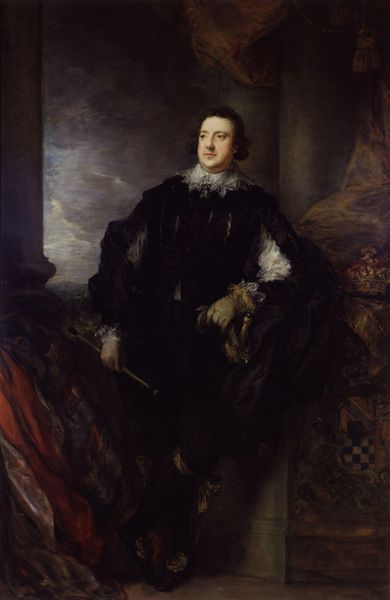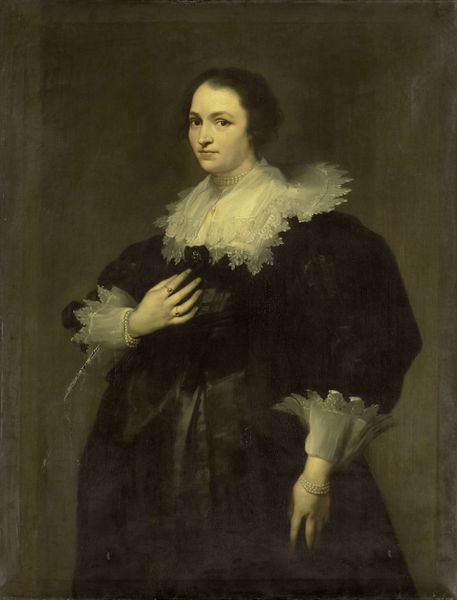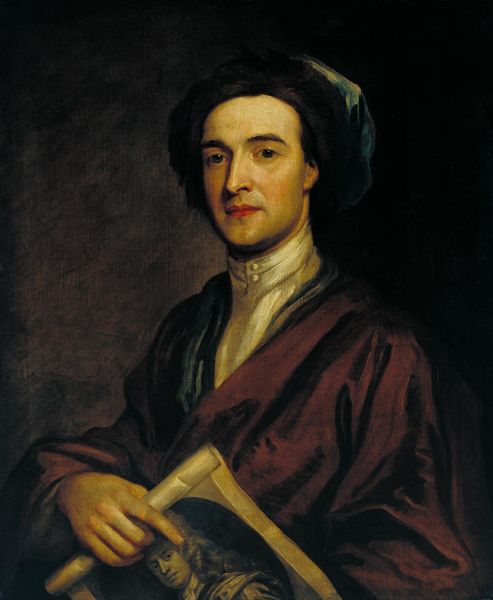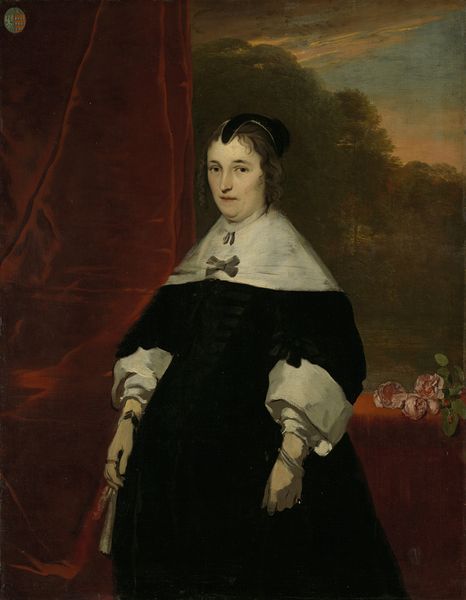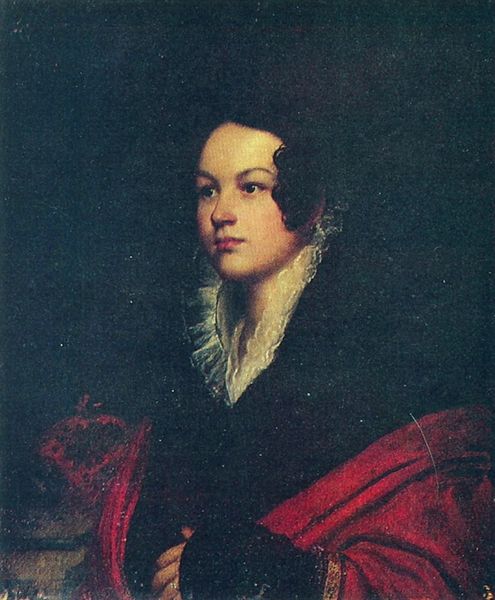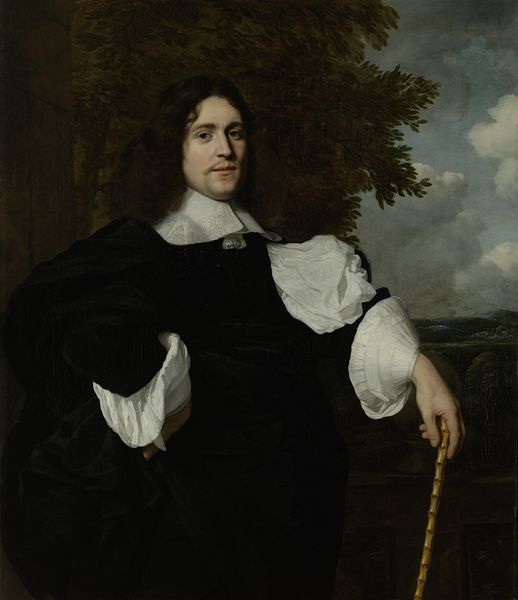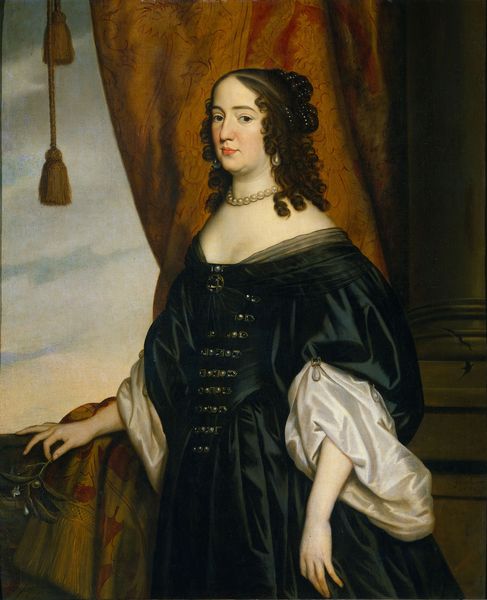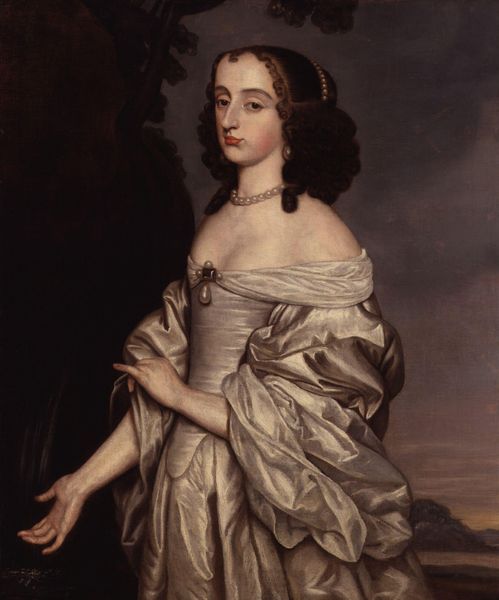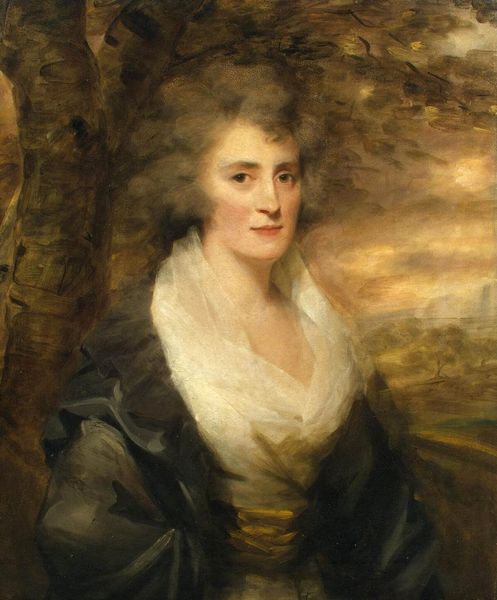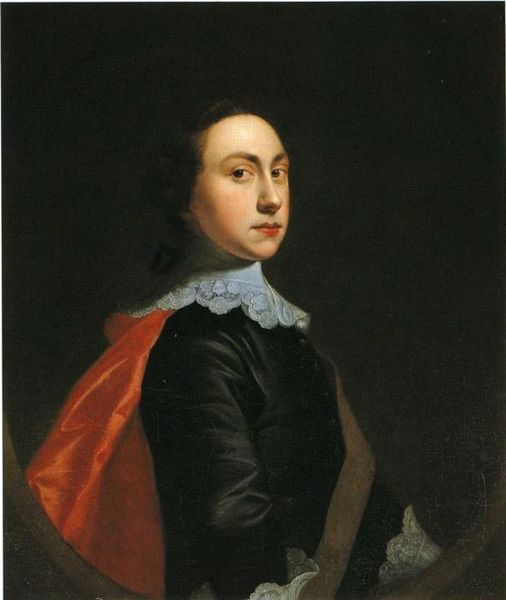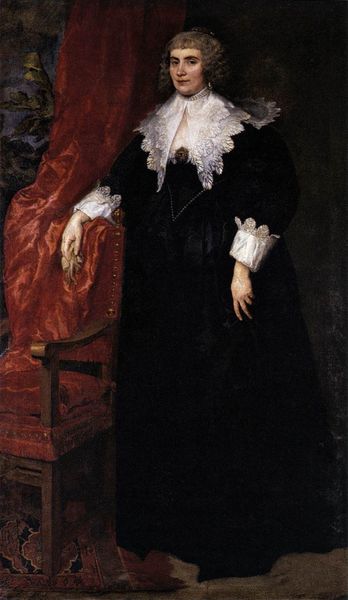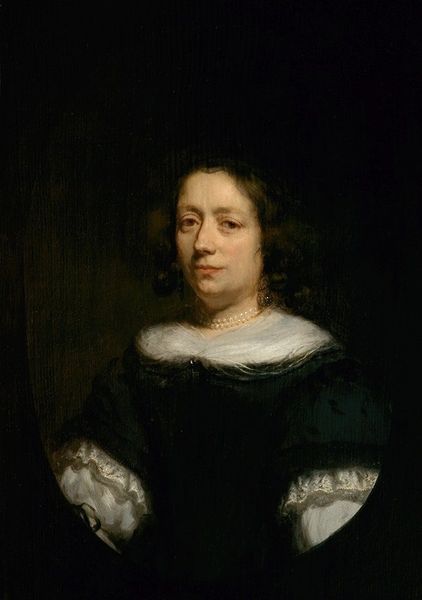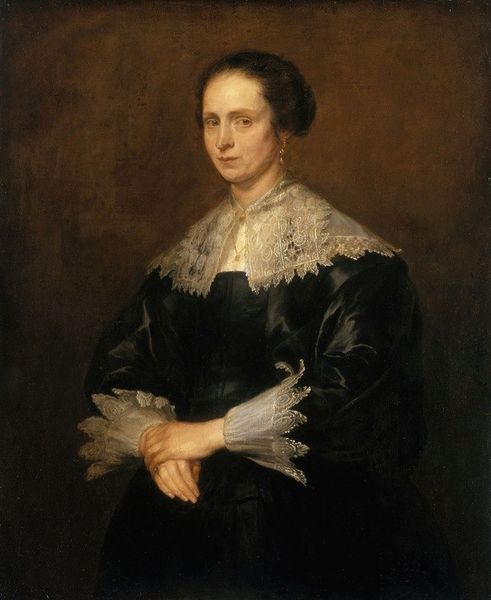
Portrait of Isabella van Assche, Wife of Justus van Meerstraten (d.1639) 1634 35 (oil on canvas) 1635
0:00
0:00
painting, oil-paint
#
portrait
#
baroque
#
painting
#
oil-paint
#
figuration
#
history-painting
Dimensions: 97 x 107.5 cm
Copyright: Public domain
Editor: This is "Portrait of Isabella van Assche, Wife of Justus van Meerstraten", painted by Anthony van Dyck around 1634-35. It’s oil on canvas. The details in her lace collar and cuffs are incredible, but her dress seems…simple. What should we make of this work? Curator: As a materialist, I’m most drawn to understanding the layers of production embedded within this portrait. Van Dyck’s studio relied on apprentices to prepare canvases, grind pigments, and even paint fabrics. Consider the division of labor involved. The raw materials for paint – pigments, oils, canvas – each sourced, traded, and processed. Does her simple dress speak more about fabric availability than fashion? Editor: That's a perspective I hadn't considered! I was just seeing the image as an artwork itself. Curator: Think of it this way: the exquisite lace and fabric texture – clearly costly items – signal status, right? But look at the canvas itself, its preparation. What social conditions enabled the subject to commission this painting? And what of the individuals whose labor enabled the materials' production, as well as the final artwork? Editor: So you’re saying that the painting itself is an artifact of the social and economic system. I guess her clothing also gives clues to how this wealthy class presented themselves. Curator: Precisely. It begs us to investigate the industries and systems that contributed to its existence and intended presentation. Are there elements about its form suggesting her individual involvement or the values within her household and daily existence? Editor: I didn't think about all the work to prepare the paints or weave the cloth. Now the painting feels fuller to me somehow, with the real lives and history that it shows. Curator: Seeing art through this lens highlights that it's not just about aesthetic representation, but about power dynamics, labor, and consumption. Something to take away.
Comments
No comments
Be the first to comment and join the conversation on the ultimate creative platform.
